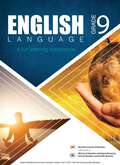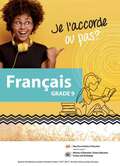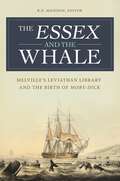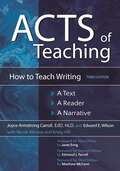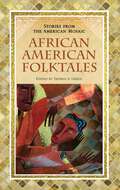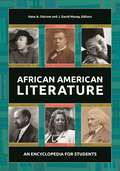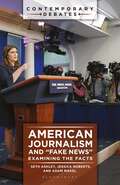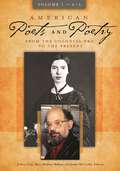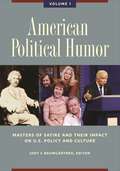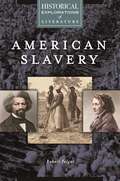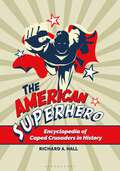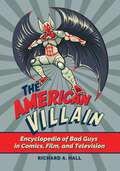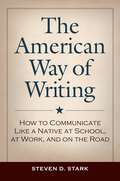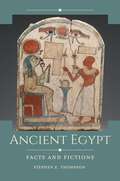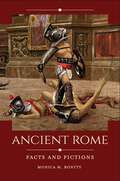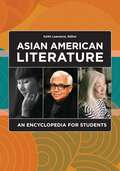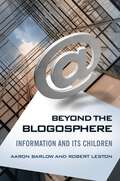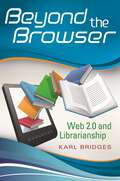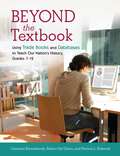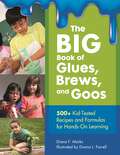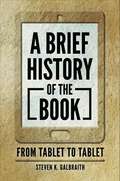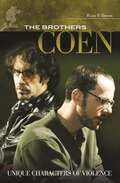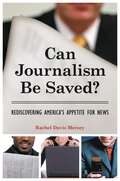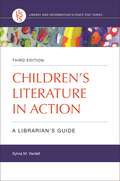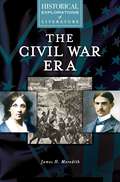- Table View
- List View
English Language: A Fun Learning Experience class 9 - MIE
by Mauritius Institute of EducationThe Grade 9 English Textbook is aligned with the National Curriculum Framework (2016) and the English Teaching and Learning Syllabus (2017), adhering to the Nine-Year Continuous Education policy. It builds on competencies from primary levels and Grades 7-8, aiming to enhance English language proficiency. The textbook encompasses communication skills, reading comprehension with diverse text types, enjoyable reading segments, writing activities emphasizing text variation, vocabulary development, and grammar instruction for effective communication. Teaching tips are included, providing flexibility for educators. Emphasizing student autonomy, the textbook encourages pleasure reading, offers post-reading activities, and aims to enrich the learning experience for both educators and students.
Français class 9 - MIE
by Mauritius Institute of EducationLe manuel de français de 9e année, élaboré par l'Institut d'Éducation de Maurice en 2021, est une ressource complète conçue pour améliorer la maîtrise de la langue en accord avec le Cadre National du Curriculum. Les contributeurs, dont le Professeur Vassen Naëck et le Dr. Vèle Putchay, ont élaboré une approche pédagogique qui s'appuie sur les compétences fondamentales acquises en 7e et 8e année. Le manuel met l'accent sur le développement des compétences linguistiques et de communication essentielles pour une expression et une compréhension efficaces. À travers des unités dédiées à la correspondance écrite, aux textes argumentatifs et au reportage, les élèves sont guidés à travers des exercices qui favorisent un apprentissage progressif et une préparation à l'examen national de 9e année. Avec son programme structuré et son contenu captivant, le manuel constitue un outil précieux pour les élèves désireux de maîtriser la langue française et d'exceller dans leurs études.
The Essex and the Whale: Melville's Leviathan Library and the Birth of Moby-Dick
by R. D. MadisonThis fascinating anthology introduces readers to the literary side of Herman Melville's whaling world with an unprecedented collection of the original whaling texts from which Melville drew to create his masterpiece, Moby-Dick.The notorious 1820 sinking of the whaleship Essex inspired Herman Melville's Moby-Dick, as recounted in Nathaniel Philbrick's bestselling book In the Heart of the Sea: The Tragedy of the Whaleship Essex—now a major motion picture. But how exactly did Melville transmute the historic tragedy of the Essex into what is arguably the "Great American Novel"? Here, for the first time, R.D. Madison collects together Melville's personal "library" of whaling and whale-lore into a single volume and presents these primary sources in a way that readers can readily see how a horrific whaling tragedy became a literary masterpiece. But where did Moby-Dick begin? Prompted by sailor-author Richard Henry Dana, Jr., Melville supplemented his own firsthand experience as a whaleman in the South Pacific with "libraries" of books that he "swum through" to create his whaling masterpiece. Scholars and lay readers alike have long wondered how he did it, and over the past 60 years, a very tight theory of inspiration and creation has emerged. It is very likely wrong. This volume gathers together for the first time all of the main texts that Melville encountered, including the accounts of the unique sinking of the Essex by a sperm whale that provided the climax for Moby-Dick. Melville scholar R. D. Madison examines what critics have said about Melville's response to the sinking and offers the challenging thesis that Melville did not even begin the book at all until spurred on by Dana in the spring of 1850.
Acts of Teaching: How to Teach Writing: A Text, A Reader, A Narrative
by Joyce Armstrong Carroll Edward E. Wilson Nicole Klimow Kristy HillInclusive of the scope and authoritative references from earlier editions, this edition additionally embraces the digital world and provides practical suggestions for performing the "act of teaching."Teachers of writing at all levels will applaud this edition for its new features designed to help teachers to understand and teach to today's new paradigms in writing. New to this edition are two chapters on cognition and technology, respectively; a chapter on early literacy, with student samples; and, for the first time, an online connection that links readers to important articles, visuals, and resources. Essay writing is explored through discussion of the thesis and its criteria; five organizational patterns for the expository essay; and distinctions among the opinion, persuasive, and argumentative essay. Several new prewriting strategies are also provided: A Sense Notebook, Looking, Contouring, an expanded explanation of Blueprinting, and a discussion of a hierarchical approach to organization.
African American Folktales (Stories from the American Mosaic)
by Thomas A. GreenAfrican American culture has a rich tradition of folktales. Written for students and general readers, this volume gathers a sampling of the most important African American folktales. Included are nearly 50 tales grouped in thematic chapters on origins; heroes, heroines, villains, and fools; society and conflict; and the supernatural. Each tale begins with an introductory headnote, and the book closes with a selected, general bibliography. Students learning about literature and language will gain a greater understanding of African American oral traditions, while social studies students will learn more about African American culture.African American culture has long been recognized for its richness and breadth. Central to that tradition is a large body of folklore, which continues to figure prominently in literature, film, and popular culture. Written for students and general readers, this book conveniently gathers and comments on nearly 50 African American folktales. Included are fictional tales, legends, myths, and personal experience narratives. These exemplify the vast diversity of African American culture and language.The tales are grouped in thematic sections on origins; heroes, heroines, villains, and fools; society and conflict; and the supernatural. Each tale is introduced by a brief headnote, and the volume closes with a selected, general bibliography. Students learning about literature and language will gain a greater understanding of African American oral traditions, while students of history will learn more about African American culture.
African American Literature: An Encyclopedia for Students
by Hans A. Ostrom and J. David MaceyThis essential volume provides an overview of and introduction to African American writers and literary periods from their beginnings through the 21st century.This compact encyclopedia, aimed at students, selects the most important authors, literary movements, and key topics for them to know. Entries cover the most influential and highly regarded African American writers, including novelists, playwrights, poets, and nonfiction writers. The book covers key periods of African American literature—such as the Harlem Renaissance, the Black Arts Movement, and the Civil Rights Era—and touches on the influence of the vernacular, including blues and hip hop. The volume provides historical context for critical viewpoints including feminism, social class, and racial politics. Entries are organized A to Z and provide biographies that focus on the contributions of key literary figures as well as overviews, background information, and definitions for key subjects.
American Journalism and "Fake News": Examining the Facts (Contemporary Debates)
by Seth Ashley Jessica Roberts Adam MakslThis book provides a comprehensive and impartial overview of the state of American journalism and news-gathering in the 21st century, with a special focus on the rise—and meaning—of "fake news."A part of ABC-CLIO's Examining the Facts series, which uses evidence-based documentation to examine the veracity of claims and beliefs about high-profile issues in American culture and politics, this volume examines beliefs, claims, and myths about American journalism and news media. It offers a comprehensive overview of the field of American journalism, including contemporary issues and historical foundations, and places modern problems such as "fake news" and misinformation in the context of larger technological and economic forces. The book illustrates the strengths and weaknesses of journalistic practices so readers can feel empowered to navigate the complex information environment in which we live and to understand the level to which various news sources can (or can't) be trusted to provide accurate and timely coverage of issues and events of import to the public and the nation. These skills and knowledge structures are necessary for any citizen who wishes to be an informed participant in a self-governing democratic society.
American Poets and Poetry [2 volumes]: From the Colonial Era to the Present [2 volumes]
by Jeffrey Gray Mary McAleer Balkun James McCorkleThe ethnically diverse scope, broad chronological coverage, and mix of biographical, critical, historical, political, and cultural entries make this the most useful and exciting poetry reference of its kind for students today.American poetry springs up out of all walks of life; its poems are "maternal as well as paternal…stuff'd with the stuff that is coarse and stuff'd with the stuff that is fine," as Walt Whitman wrote, adding "Of every hue and caste am I, of every rank and religion." Written for high school and undergraduate students, this two-volume encyclopedia covers U.S. poetry from the Colonial era to the present, offering full treatments of hundreds of key poets of the American canon. What sets this reference apart is that it also discusses events, movements, schools, and poetic approaches, placing poets in their social, historical, political, cultural, and critical contexts and showing how their works mirror the eras in which they were written. Readers will learn about surrealism, ekphrastic poetry, pastoral elegy, the Black Mountain poets, and "language" poetry. There are long and rich entries on modernism and postmodernism as well as entries related to the formal and technical dimensions of American poetry.Particular attention is paid to women poets and poets from various ethnic groups. Poets such as Amiri Baraka, Nathaniel Mackey, Natasha Trethewey, and Tracy Smith are featured. The encyclopedia also contains entries on a wide selection of Latino and Native American poets and substantial coverage of the avant-garde and experimental movements and provides sidebars that illuminate key points.
American Political Humor [2 volumes]: Masters of Satire and Their Impact on U.S. Policy and Culture [2 volumes]
by Jody C BaumgartnerThis two-volume set surveys the profound impact of political humor and satire on American culture and politics over the years, paying special attention to the explosion of political humor in today's wide-ranging and turbulent media environment.Historically, there has been a tendency to regard political satire and humor as a sideshow to the wider world of American politics—entertaining and sometimes insightful, but ultimately only of modest interest to students and others surveying the trajectory of American politics and culture. This set documents just how mistaken that assumption is. By examining political humor and satire throughout US history, these volumes not only illustrate how expressions of political satire and humor reflect changes in American attitudes about presidents, parties, and issues but also how satirists, comedians, cartoonists, and filmmakers have helped to shape popular attitudes about landmark historical events, major American institutions and movements, and the nation's political leaders and cultural giants. Finally, this work examines how today's brand of political humor may be more influential than ever before in shaping American attitudes about the nation in which we live.
American Slavery: A Historical Exploration of Literature (Historical Explorations of Literature)
by Robert FelgarUtilizing key selections from American literature, this volume aligns with ELA Common Core Standards to give students a fresh perspective on and a keener understanding of slavery in the United States.Slavery is a central feature of American history, one with which the nation still has not come fully to terms. In this book, that seminal topic is examined in a fresh way—through literature. Organized chronologically to show evolving attitudes toward American slavery in the 19th century, the work focuses on four key 19th-century texts that are frequently taught, using them as a gateway for understanding this critical period and why slavery had to be destroyed if the Union was to be maintained.In addition to examining the four works—Frederick Douglass's Narrative of the Life of Frederick Douglass, Harriet Beecher Stowe's Uncle Tom's Cabin, Harriet Jacobs's Incidents in the Life of a Slave Girl, and Mark Twain's Huckleberry Finn—the book also provides numerous historical documents that contextualize slavery in the literary texts. These documents make it dramatically clear why issues such as abolition and the Fugitive Slave Law of 1850 were so controversial for 19th-century Americans. Aligned with the ELA Common Core Standards, the title supports history teachers with insights into classic literary works, and it enhances the English curriculum with rich elaborations of relevant historical context.
The American Superhero: Encyclopedia of Caped Crusaders in History
by Richard A. HallThis compilation of essential information on 100 superheroes from comic book issues, various print and online references, and scholarly analyses provides readers all of the relevant material on superheroes in one place.The American Superhero: Encyclopedia of Caped Crusaders in History covers the history of superheroes and superheroines in America from approximately 1938–2010 in an intentionally inclusive manner. The book features a chronology of important dates in superhero history, five thematic essays covering the overall history of superheroes, and 100 A–Z entries on various superheroes. Complementing the entries are sidebars of important figures or events and a glossary of terms in superhero research. Designed for anyone beginning to research superheroes and superheroines, The American Superhero contains a wide variety of facts, figures, and features about caped crusaders and shows their importance in American history. Further, it collects and verifies information that otherwise would require hours of looking through multiple books and websites to find.
The American Villain: Encyclopedia of Bad Guys in Comics, Film, and Television
by Richard A. HallThe American Villain: Encyclopedia of Bad Guys in Comics, Film, and Television seeks to provide one go-to reference for the study of the most popular and iconic villains in American popular culture.Since the 1980s, pop culture has focused on what makes a villain a villain. The Joker, Darth Vader, and Hannibal Lecter have all been placed under the microscope to get to the origins of their villainy. Additionally, such bad guys as Angelus from Buffy the Vampire Slayer and Barnabas Collins from Dark Shadows have emphasized the desire for redemption—in even the darkest of villains. Various incarnations of Lucifer/Satan have even gone so far as to explore the very foundations of what we consider "evil." The American Villain: Encyclopedia of Bad Guys in Comics, Film, and Television seeks to collect all of those stories into one comprehensive volume. The volume opens with essays about villains in popular culture, followed by 100 A–Z entries on the most notorious bad guys in film, comics, and more. Sidebars highlight ancillary points of interest, such as authors, creators, and tropes that illuminate the motives of various villains. A glossary of key terms and a bibliography provide students with resources to continue their study of what makes the "baddest" among us so bad.
The American Way of Writing: How to Communicate Like a Native at School, at Work, and on the Road
by Steven D. StarkExplains the uniquely American cultural references that appear in American English for students and professionals to increase their written command of the language.Language is a window into the soul of a culture. The hardest part for newcomers who want to master American English is not learning the alphabet, grammar, or vocabulary — it's understanding the distinctive way Americans approach the world. This book shows readers how to do just that. The American Way of Writing guides readers through the nuances of American English, providing a toolkit for non-native speakers who come to the United States to study, as well as international business and legal professionals who have to work and communicate with Americans in a professional or business context. Understanding what makes Americans uniquely "American" is a challenging subject for anyone to master. Such characteristics are always in flux and a source of constant debate. Steven D. Stark's comprehensive approach to American English in The American Way of Writing is suited to Americans and foreigners alike, offering a deeper understanding of the ties that bind rather than divide.
Ancient Egypt: Facts and Fictions (Historical Facts and Fictions)
by Stephen E. ThompsonComprising a unique collection of primary sources, this book critically examines several topics relating to ancient Egypt that are of high interest to readers but about which misconceptions abound.With its pyramids, mummies, and sphinxes, ancient Egypt has fascinated us for centuries. It has been the setting of many films and novels, figuring prominently in popular culture. Much of what the average reader believes about this civilization, however, is mistaken. Through a unique collection of primary source documents, this book critically examines several topics related to ancient Egypt and about which misconceptions abound.Primary sources, many in new translations by the author, are drawn from ancient Egyptian, classical Greek and Roman, Muslim, early Christian, and modern European documents. These sources shed light on popular misconceptions. Such topics include the divinity of the pharaoh, the role of animals in ancient Egyptian religion, the purpose of the Egyptian pyramids, the use of slave labor, the Egyptian hieroglyphic writing system, the role of Cleopatra in the defeat of Marc Antony and the fall of the Roman Republic, and the influence of Egyptian religion on the development of early Christianity. By studying these documents, users will be able to develop their skills interpreting and evaluating primary sources.
Ancient Rome: Facts and Fictions (Historical Facts and Fictions)
by Monica M. BonttyThis book shares little-known facts from and excerpts of primary source documents to correct popular misconceptions about Ancient Rome and to show how those misconceptions became widespread.Roman personalities and history have always had a larger-than-life profile in American popular culture, but most people think of this ancient civilization as merely decadent, cruel, and elitist. Most of our stereotypical conceptions of the empire and its people, however, are wrong. This book corrects popular misconceptions about the ancient Roman world, thus making ancient history relevant and accessible to modern readers and allowing modern critics of American politics and society to draw accurate comparisons.Each chapter discusses how a particular misconception developed, spread, and evolved into what we now believe to be the historical truth. Topics discussed include crucifixion, the destruction of Carthage, Julius Caesar's last words, and Roman hygiene. Excerpts from primary source documents provide evidence of both the rise of the historical fictions and the truths behind the myths.
Asian American Literature: An Encyclopedia for Students
by Keith LawrenceAsian American Literature: An Encyclopedia for Students is an invaluable resource for students curious to know more about Asian North American writers, texts, and the issues and drives that motivate their writing.This volume collects, in one place, a breadth of information about Asian American literary and cultural history as well as the authors and texts that best define it.A dozen contextual essays introduce fundamental elements or subcategories of Asian American literature, expanding on social and literary concerns or tensions that are familiar and relevant. Essays include the origins and development of the term "Asian American"; overviews of Asian American and Asian Canadian social and literary histories; essays on Asian American identity, gender issues, and sexuality; and discussions of Asian American rhetoric and children's literature. More than 120 alphabetical entries round out the volume and cover important Asian North American authors. Historical information is presented in clear and engaging ways, and author entries emphasize biographical or textual details that are significant to contemporary young adults. Special attention has been given to pioneering authors from the late 19th century through the early 1970s and to influential or well-known contemporary authors, especially those likely to be studied in high school or university classrooms.
Beyond the Blogosphere: Information and Its Children
by Aaron Barlow Robert Leston Ph.D.This book looks at questions and answers pertaining to the organization, usage, and ownership of information in the Internet age—and the impact of shifting attitudes towards information ownership on creative endeavors.In the competing traditions of Marshall McLuhan and Langdon Winner, authors Aaron Barlow and Robert Leston take readers on a revealing tour of the Internet after the explosion of the blogosphere and social media. In the world Beyond the Blogosphere, information has surpassed its limits, the distinction between public and private selves has collapsed, information is more untrustworthy than it ever was before, and technology has exhibited a growth and a desire that may soon exceed human control. As Langdon Winner pointed out long ago, "tools have politics." In an eye-opening journey that navigates the nuances of the cultural impact the internet is having on daily life, Barlow and Leston examine the culture of participation in order to urge others to reconsider the view that the Internet is merely a platform or a set of tools that humans use to suit their own desires. Provocative and engaging, Beyond the Blogosphere stands as a challenge on how to rethink the Internet so that it doesn't out-think us.
Beyond the Browser: Web 2.0 and Librarianship
by Karl BridgesAuthored by an experienced librarian, digital resource manager, and professor in the field of library science, this book explores the wide-reaching impact of second-generation web technologies on library organization and services—and how library staff must respond.Most librarians are infinitely familiar with the Internet due to their daily use of this essential resource. However, having practical expertise with today's digital resources does not guarantee the ability to speak intelligently and convincingly about their less-obvious benefits to funding authorities—an important skill to have. Beyond the Browser: Web 2.0 and Librarianship overviews the history of libraries and the Internet to provide necessary perspective and then examines current and future trends in libraries. In Part I, the author traces the notion of connectivity from its roots in the 19th century through the rise of digital technology in the second half of the 20th, concluding with a discussion of its influence on the role expectations and performance of today's information professional. Part II investigates the evolutionary impact of open access, scholarly inquiry, and second-generation web technologies on library organization and services. A bibliography of helpful resources is also included.
Beyond the Textbook: Using Trade Books and Databases to Teach Our Nation's History, Grades 7–12
by Carianne Bernadowski Patricia L. Kolencik Robert Del GrecoThis collection of standards-based lessons will guide middle and high school teachers while teaching the nation's history in a user-friendly, ready-made fashion.During a time of standards-based instruction, Beyond the Textbook: Using Trade Books and Databases to Teach Our Nation's History, Grades 7–12 will fill the gap in today's middle and high school classrooms to simultaneously engage students in effective literacy skill exercises and teach our nation's history. Authored by three experienced former public school teachers, these ready-made lesson plans for classroom teachers and school librarians make planning easy for implementation in a social studies, history, or English classroom. The book covers topics from Native Americans to the Louisiana Purchase, offering evidence-based reading strategies throughout that can hold adolescents' attention and develop their vocabulary and comprehension. Each chapter will include bibliographic information; suggested grade level; Information Literacy and National Social Studies Standards; before, during, and after reading strategies; database integration for classroom use; and suggested readalikes. Users will find the standards and evidenced-based research perfectly applicable in today's classrooms.
The BIG Book of Glues, Brews, and Goos: 500+ Kid-Tested Recipes and Formulas for Hands-On Learning
by Diana F. MarksThis compilation is a must-have for every library, providing a multitude of methods for developing easy, interesting activities for children. Projects across cultures, recipes for healthy snacks, and intriguing science experiments are among the hundreds of ideas connecting learning and creativity for students of all ages.Here's a book to help students create cross-disciplinary projects by using materials they make themselves. From clays and dough, to compounds and crystals, to healthy treats and snacks, children can access the formulas and recipes to make them all! This updated resource combines everything from the former two volumes into one comprehensive edition and features even more recipes, additional relevant content, and expanded connections between activities and curriculum. Every activity provides you with easy-to-follow, step-by-step directions. Each tried-and-true, safe concoction uses easily obtainable ingredients and provides suggestions for determining why and when each formula can be used. The book contains recommendations for linking projects to curriculum to help make each activity relevant and educational. Organized into 33 chapters, projects include making musical instruments, growing and using plants, conducting science experiments, and preparing food for ourselves and other creatures.
A Brief History of the Book: From Tablet to Tablet
by Steven K. GalbraithThis book leads readers through an intriguing examination of how books began and have evolved through history and explores where future technologies may lead them.From ancient clay tablet and scrolls to medieval manuscripts and printed books to personal computers and iPads, this guide examines the fascinating history of books from 4000 BCE to the present. At each step of this evolution, technologies are examined and evaluated to show how these ideas are present from the very beginning of written communication. Moving chronologically from the ancient world to the present, the book shows how written communication media evolved from cuneiform to the Kindle. Focusing on key technologies and vital periods of historical transition, it traces an evolution that elucidates the history of the written word, at each step examining and evaluating such aspects of technologies as memory capacity, readability and writability, durability, recyclability, information security, ease and mode of access, and cost. Additional attention is paid to how these technologies were made, how they were circulated, and who was reading them.
The Brothers Coen: Unique Characters of Violence (Modern Filmmakers)
by Ryan P. DoomThis examination of the distinctive cinema of Joel and Ethan Coen explores the theme of violence in their wide-ranging body of work.The Brothers Coen: Unique Characters of Violence spans the career of the two-time Oscar-winning producer/director team, exploring the theme of violence that runs through a genre-spanning body of work, from the neo-noir of Blood Simple to the brutal comedy Burn After Reading (2008).In chapters focusing on major characters, Ryan Doom looks at the chaotic cinematic universe of the Coens, where violent acts inevitably have devastating, unintended consequences. The remarkable gallery of Coen characters are all here: hardboiled gangster Tom Regan from Miller's Crossing (1990), overmatched amateur kidnapper Jerry Lundergaard from Fargo (1996), accidental private eye "The Dude" from The Big Lebowski (1998), psychopathic assassin-for-hire Anton Chigurh from the 2007 Academy Award winner No Country for Old Men, and more.
Can Journalism Be Saved?: Rediscovering America's Appetite for News
by Rachel Davis MerseyThis book challenges the once-dominant social responsibility model and argues that a new, "individual-first" paradigm is what will allow journalism to survive in today's crowded media marketplace.By some measures, it would seem that print journalism is dying. Journalism recently suffered one of its worst circulation declines in years: a drop of more than ten percent in the a six month period ending September 30, 2009. The Rocky Mountain News in Denver, CO, closed its doors in 2009—after it dominated the AP awards in 2008, and was lauded for an investigative expose on unfair treatment of former nuclear workers. Even the New York Times and the Washington Post are experiencing financial trouble. But print advertising revenue still trumps online advertising revenue ten-fold. Is there hope yet for traditional journalism?This book reviews the complicated challenge facing journalism, tracing its 19th-century community-oriented origins and documenting the vast expansion of the news business via blogs and other Internet-enabled outlets, user-generated content, and news-like alternatives. The author argues that a radical shift in mindset—striving to meet each individual's demands for what he wants to know—will be necessary to save journalism.
Children's Literature in Action: A Librarian's Guide (Library and Information Science Text Series)
by Sylvia M. VardellThis practitioner-oriented introduction to literature for children ages 5–12 covers the latest trends, titles, and tools for choosing the best books and materials as well as for planning fun and effective programs and activities.The third edition of Children's Literature in Action provides an activity-oriented survey of children's literature for undergraduate and graduate students seeking licensure and degrees that will lead to careers working with children in schools and public libraries. Author Sylvia M. Vardell draws on her 30 years of university teaching and extensive familiarity with the major textbooks in the area of children's literature to deliver something different: a book that focuses specifically on the perspective and needs of the librarian, with emphasis on practical action and library applications. Its contents address seven major genres: picture books, traditional tales, poetry, contemporary realistic fiction, historical fiction, fantasy, and informational books. Each chapter includes practical applications for the educator who shares books with children and who develops literature-based instruction. Chapters are enriched by author comments, collaborative activities, featured books, special topics, and activities including selected awards and celebrations, historical connections, recommended resources, issues for discussion, and assignment suggestions. This new edition incorporates the 2018 AASL National School Library Standards.
The Civil War Era: A Historical Exploration of Literature (Historical Explorations of Literature)
by James H. MeredithThis intriguing study examines the truth behind the myths and misconceptions that defined the American Civil War, as portrayed through the popular literary works of the time.The Civil War Era: A Historical Exploration of Literature examines the tremendous change the American Civil War brought to society as reflected in the literature of the time. It delves into the cultural, historical, and literary contexts of the era, looking beyond common conceptions and instead reflecting on the era's complexities and contradictions.The book profiles key American literature related to the war, both on and off the battlefield, including Stephen Crane's The Red Badge of Courage, Ambrose Bierce's "Chickamauga," Louisa May Alcott's Hospital Sketches, the Civil War poems of Walt Whitman and Herman Melville, and Lincoln's "Gettysburg Address." This book serves to demonstrate how profoundly the actions on the Civil War battlefield shaped American politics, society, and the arts.
